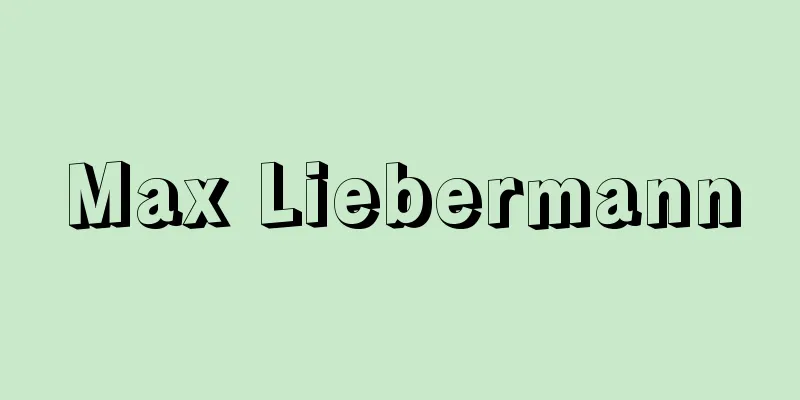Facsimile - facsimile (English spelling)

|
A communication method or device that converts characters, figures, photographs, etc. into electrical signals and transmits them to a remote location to obtain a similar record. It is also called phototelegraphy, phototelegraphy, facsimile transmission, or simply fax for short. [Ryo Tsuboi] historyThe history of the facsimile itself is long, dating back to its invention in 1843 by Alexander Bain (1810-1877) of England, making it the second oldest form of electrical communication after the telegraph. In Japan, the NE-type phototelegraph device was developed in 1928 (Showa 3) by Niwa Yasujiro and others. Initially, facsimiles were limited to specific fields such as the transmission of newspaper news photographs, command communications for the police and Japanese National Railways, and the transmission of weather charts, and did not become widespread among the general public. However, with the amendment of the Public Telecommunications Act in 1972 (Showa 47), known as the opening of lines, facsimile communication over the telephone network became possible, and facsimile communication began to spread rapidly for use in ordinary companies. In recent years, it has been widely used even in private shops and ordinary homes, and in 1984 the number of units installed nationwide exceeded 700,000. Furthermore, in 1981, a "facsimile communication network service" was launched, which offers services such as a "broadcast function" that allows sending to multiple terminals at once, and a "retry function" that automatically repeats the transmission several times even if the other party is on the phone. [Ryo Tsuboi] principleThe original document to be transmitted is scanned, converted into electrical signals and broken down into pixels, which are then transmitted electronically. At the receiving end, the signals are sequentially reassembled in synchronization with the transmitting end to obtain a recorded image. There are two scanning methods: mechanical scanning and electronic scanning, but in recent years, electronic scanning has been actively adopted because it allows for high-speed scanning through the use of bandwidth compression technology and is less susceptible to mechanical failures. Electronic scanning is broadly divided into electron tube scanning methods, such as camera tubes, and solid-state scanning methods, which use semiconductor elements, but in recent years the solid-state scanning method has become more common. The restored electrical signal on the receiving side is converted into another form of energy for recording, and the image is reproduced on the recording medium by the stimulation. Recording methods can be classified according to the energy used: (1) electrostatic recording, discharge recording, electrolytic recording, and electrothermal recording, which use electrical energy; (2) electrophotographic recording, which uses light energy; (3) thermal recording and thermal transfer recording, which use thermal energy; and (4) other inkjet recording methods. [Ryo Tsuboi] ClassificationThe Consultative Committee for International Telegraph and Telephone (CCITT) classifies global standards for facsimile transmission and other communication methods as follows: (1) Group I (G1) uses telephone lines and uses double-sideband modulation with no means of compressing the bandwidth of the transmitted signal to transmit an A4-sized document in approximately six minutes (six-minute machine). (2) Group II (G2) uses telephone lines and bandwidth compression techniques such as coding or vestigial sideband modulation to transmit an A4-sized document in approximately three minutes (3-minute machine). (3) Group III (G3) This uses telephone lines to transmit an A4 document in approximately one minute by using a means to suppress the redundancy of facsimile signals. Bandwidth compression technology may be used as a modulation method (1 minute machine). (4) Group IV (G4) This is a digital facsimile that mainly uses public data networks, has a redundancy reduction coding function, and is capable of error-free communication. [Ryo Tsuboi] [Reference items] | |Source: Shogakukan Encyclopedia Nipponica About Encyclopedia Nipponica Information | Legend |
|
文字、図形、写真などを電気信号に変換して遠隔地に電送し、相似な記録を得る通信手段、またはその装置。写真電送、写真電信、模写電送、または略してファックスfaxともいう。 [坪井 了] 歴史ファクシミリそのものの歴史は古く、1843年イギリスのベインAlexander Bain(1810―1877)による発明にさかのぼり、電信に次ぐ古い電気通信手段である。日本では1928年(昭和3)に、丹羽保次郎(にわやすじろう)らによってNE式写真電送装置が開発されている。ファクシミリは当初は、新聞ニュース写真の電送、警察・国鉄などの指令通信、気象図の電送などの特定分野に限られ、一般に普及するには至らなかった。 しかし、1972年(昭和47)の公衆電気通信法の改正、いわゆる回線開放により、電話網を用いたファクシミリ通信が可能となり、一般企業の事務用として急速に普及し始めた。最近では個人商店や一般家庭にまで広範に使用され、1984年には全国の設置台数が70万台を突破した。また、1981年からは、一度に複数の端末に送信できる「同報機能」や、相手が通話中の場合でも自動的に何度か送信を繰り返す「再呼(さいこ)機能」などのサービスが受けられる「ファクシミリ通信網サービス」も開始されている。 [坪井 了] 原理送信原稿を走査して、電気的な信号に変換しながら画素に分解し、これを電送するとともに、受信側では送信側と同期をとりながら順次組み立て、記録画を得るものである。 走査方法としては、機械的走査方式、電子的走査方式があるが、近年は帯域圧縮技術などの採用による高速走査が可能で、機械的な故障も少ない電子的走査方式が積極的に採用されている。電子的走査は、撮像管などの電子管走査方式と、半導体素子など使用する個体走査方式に大別されるが、近年は個体走査方式が用いられていることが多い。 受信側で復原された電気信号は、記録のために別の形のエネルギーに変換され、その刺激によって記録媒体上に画像が再現される。エネルギー別に記録方式を分類すると、(1)電気エネルギーを利用する静電記録、放電記録、電解記録、通電感熱記録、(2)光エネルギーを利用する電子写真記録、(3)熱エネルギーを利用する感熱記録、熱転写記録、(4)その他のインクジェット記録などがある。 [坪井 了] 分類国際電信電話諮問委員会(CCITT)ではファクシミリの電送などについて、世界の標準として次のように分類している。 (1)グループⅠ(G1) 電話回線を用い、送出する信号の帯域を圧縮する手段をもたない両側帯波変調を使用してA4判の原稿を約6分で電送する(6分機)。 (2)グループⅡ(G2) 電話回線を用い、符号化または残留側帯波変調などの帯域圧縮技術を使用してA4判の原稿を約3分で電送する(3分機)。 (3)グループⅢ(G3) 電話回線を用い、ファクシミリ信号の冗長性を抑圧する手段を用いてA4判の原稿を約1分で電送する。変調方式として帯域圧縮技術を使用してもよい(1分機)。 (4)グループⅣ(G4) 主として公衆データ網を用いるデジタルファクシミリで、冗長度抑圧符号化機能を有し、エラーフリー通信が可能である。 [坪井 了] [参照項目] | |出典 小学館 日本大百科全書(ニッポニカ)日本大百科全書(ニッポニカ)について 情報 | 凡例 |
Recommend
Pipeline - Pipeline (English spelling)
A facility for transporting fluids through pipes....
Alto Paraná (English spelling)
A Japanese settlement in Itapúa Department, Parag...
Saeki Imamishi - Saeki Imamishi
Year of death: Enryaku 9.10.3 (790.11.13) Year of ...
Asano Shiro
...It is clear that there was a longing for Weste...
pygmy date palm
…It is also grown in pots for indoor decoration, ...
Organization for Security and Cooperation in Europe
OSCE is an international organization for interna...
Okinawa pheasant - Okinawa pheasant
...It is distributed in southern Kyushu, Ryukyu, ...
proliferation
...the maintenance of a species by leaving offspr...
Malla (English spelling)
An ancient tribe in North India. Around the 6th ce...
Nagasaki Peninsula
A peninsula that juts out into the southern part ...
Alliance of Three Emperors (English: Dreikaiserbund) German
A political agreement concluded between the emper...
Enchantment - Enchantment
…Reigned 1796-1820. After 60 years on the throne,...
Rescue Association - Kyukokukai
…She was born in Wujin, Jiangsu Province. After t...
Jodojin - Jodojin
Also known as the Mountaintop Cave Man. A group of...
Snail-worm
A type of small spiral-shelled worm belonging to ...









